Mother’s Day began as a call to action to improve the lives of families through health and peace. Ann Jarvis of Appalachia founded Mother’s Day in 1858 to promote sanitation in response to high infant mortality. After the Civil War, abolitionist Julia Ward Howe made a Mother’s Day call to women to protest the carnage of war.
To explore the history and purpose of Mother’s Day, beyond the textbooks and commercial media, we offer below contemporary campaigns (such as #FreeBlackMamas), the original proclamation by Julia Ward Howe, a short film called Mother’s Day for Peace, an excerpt from an article on the Appalachian origins of Mother’s Day, and an excerpt from an article called “The Original Anti-War Mother’s Day.”
Contemporary Campaigns
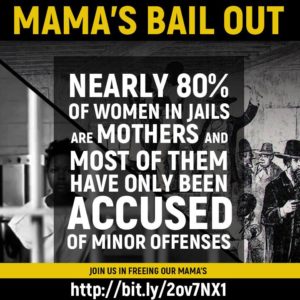 Mama’s Bail Out Day: Campaign to bail out as many mothers as possible for Mother’s Day. |
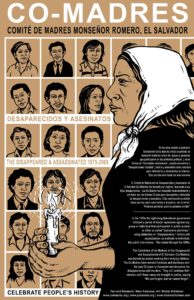 Co-Madres of El Salvador: Project by mothers to find missing and disappeared children. |
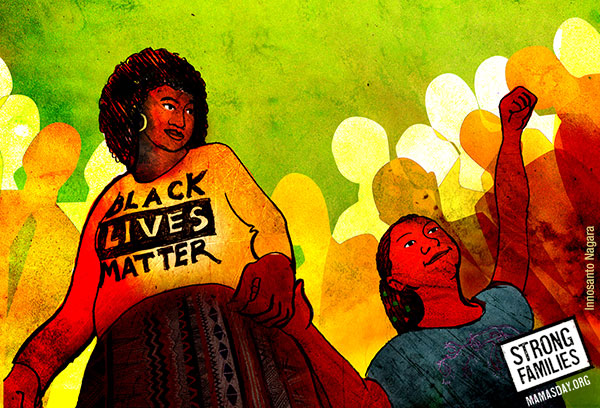 Mama’s Day: Commissioned eCards that reflects the diversity of mothers and families. |
|
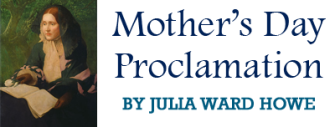 Mother’s Day Proclamation, 1870
Mother’s Day Proclamation, 1870
By Julia Ward Howe
Arise, then, women of this day!
Arise, all women who have hearts, Whether our baptism be of water or of tears!
Say firmly: “We will not have great questions decided by irrelevant agencies, Our husbands will not come to us, reeking with carnage, for caresses and applause. Our sons shall not be taken from us to unlearn All that we have been able to teach them of charity, mercy and patience. We, the women of one country, will be too tender of those of another country To allow our sons to be trained to injure theirs.”
From the bosom of the devastated Earth a voice goes up with our own. It says: “Disarm! Disarm! The sword of murder is not the balance of justice.” Blood does not wipe out dishonor, nor violence indicate possession. As men have often forsaken the plough and the anvil at the summons of war, Let women now leave all that may be left of home for a great and earnest day of counsel.
Let them meet first, as women, to bewail and commemorate the dead. Let them solemnly take counsel with each other as to the means Whereby the great human family can live in peace, Each bearing after his own time the sacred impress, not of Caesar, But of God.
In the name of womanhood and humanity, I earnestly ask That a general congress of women without limit of nationality May be appointed and held at someplace deemed most convenient And at the earliest period consistent with its objects, To promote the alliance of the different nationalities, The amicable settlement of international questions,
The great and general interests of peace.
Mother’s Day for Peace
The film Mother’s Day for Peace features Alfre Woodard, Gloria Steinem, Vanessa Williams, Felicity Huffman, Fatma Saleh, Ashraf Salimian, and Christine Lahti talking about why feminist and abolitionist Julia Ward Howe started Mother’s Day as a protest against war and the relevance today. The film opens with Gloria Steinem explaining:
Mother’s Day really was in its origin an antiwar day, an antiwar statement. Julia Ward Howe was sickened by what had happened during the Civil War, the loss of life, the carnage, and she created Mother’s Day as a call for women all over the world to come together and create ways of protesting war, of making a kind of alternate government that could finally do away with war as an acceptable way of solving conflict.
The short film, produced by Robert Greenwald of Brave New Films, was featured on Democracy Now! in a 2009 broadcast here.
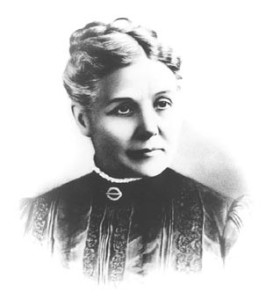
Ann Jarvis, founder of Mothers Work Day in 1858.
Appalachian Origins
By Sharon Montgomery
If the founders of Mother’s Day saw how we celebrate this day, they would be dismayed. Ann Jarvis, founder of Mothers Work Day in 1858, created a day for mothers to work for better cleanliness and health. Because two of her children died before the age of three, Anna asked doctors in her Appalachian community to teach her how to prevent disease. On Mothers Work Day, and in Mothers Day Work Clubs throughout her county, those mothers taught others how to prepare food properly and clean their homes. This gradually improved the health of their families.
Sadly, not all children survived. Although Ann gave birth to eleven children by 1867, only four lived to adulthood. Their lives were cut short, perhaps by childhood diseases of measles, smallpox, diphtheria, whooping cough, or tuberculosis. Infection spread easily among the mining towns and small communities. Today most of these diseases are controlled by childhood vaccinations.
Death was a constant presence in the area because of the Civil War (1861-1865). Taylor County was a major battlefield between the Union and Confederate armies. Since both sides surrounded them, Ann declared Women’s Friendship Day, convincing local mothers to be fair to both sides. They went into camps to treat the wounded and to teach sanitation and disinfection. After the war, local leaders asked these women to teach former enemies how to get along.
Julia Ward Howe, a mother, author and activist, was inspired by Ann Jarvis. Julia wrote the words to the Battle Hymn of the Republic early in the war. In 1862 she and her husband, Samuel Gridley Howe, joined the U.S. Sanitary Commission. More men died in the Civil War from disease in prisoner of war camps and their own army camps than died in battle. The Sanitary Commission helped to reduce those deaths later in the war.
After the war, Julia wanted to bring an end to war and equality for all people, regardless of race, religion, gender or nationality. She wrote the Mothers Day Proclamation, calling mothers to leave their homes for one day a year and work for peace in their communities. Julia translated her proclamation into several languages and traveled around the world, urging all to join in a Mothers Day for Peace. On the second Sunday in June, 1872, the first Mothers Peace Day was celebrated in Boston, Massachusetts. For the next thirty years Americans celebrated this day in June.
Continue reading this article, “Is Mothers Day a Lost Cause?,” by retired Canadian teacher Sharon Montgomery on the history of Mother’s Day.
The Original Anti-War Mother’s Day
By Gary Kohls on Common Dreams
By 1870, Julia Ward Howe had been deeply affected both by the ongoing agonies of Civil War veterans and the carnage occurring overseas in the Franco-Prussian War. Though very short, that war resulted in almost 100,000 killed in action plus another 100,000 lethally wounded or sickened.
As a humanist who cared about suffering people — as well as a feminist and a suffragette who advocated social justice — Howe penned her “Mother’s Day Proclamation” in 1870 as an appeal to mothers to spare their sons and the sons of others from the depredations of war.
The Mother’s Day Proclamation was partly a lament for the useless deaths and partly a call to action to stop future wars. The call was directed, not to men, many of whom may have felt proud for their “service,” but to women, who often have proved more thoughtful and humane about issues of human suffering.
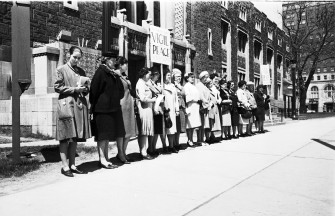
Mother’s Day Vigil for Peace by Voice of Women (VOW) at the Royal Ontario Museum on May 11, 1963. Photo B. Palmer Ward, Toronto Telegram.
Then, on June 2, 1872, in New York City, Julia Ward Howe held the first “Mother’s Day” as an anti-war observance, a practice Howe continued in Boston for the next decade before it died out.
The modern Mother’s Day, with its apolitical message, emerged in the early 20th century, with Howe’s original intent largely erased from the mainstream consciousness. Howe’s vision of an antiwar mother’s call to action was watered-down into an annual expression of sentimentality.
Continue reading full article by retired physician Dr. Gary G. Kohls here.

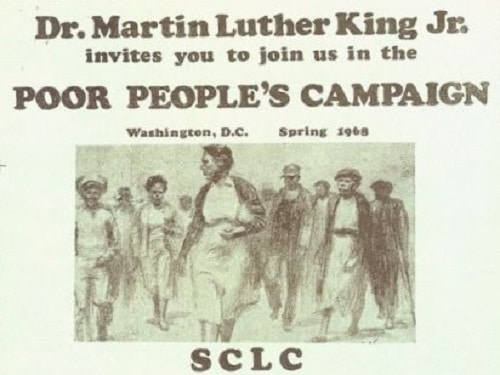
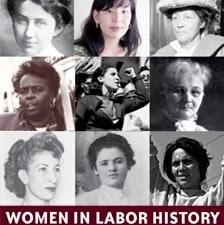





Twitter
Google plus
LinkedIn